Your morning brew, made by you, perfected by Breville.
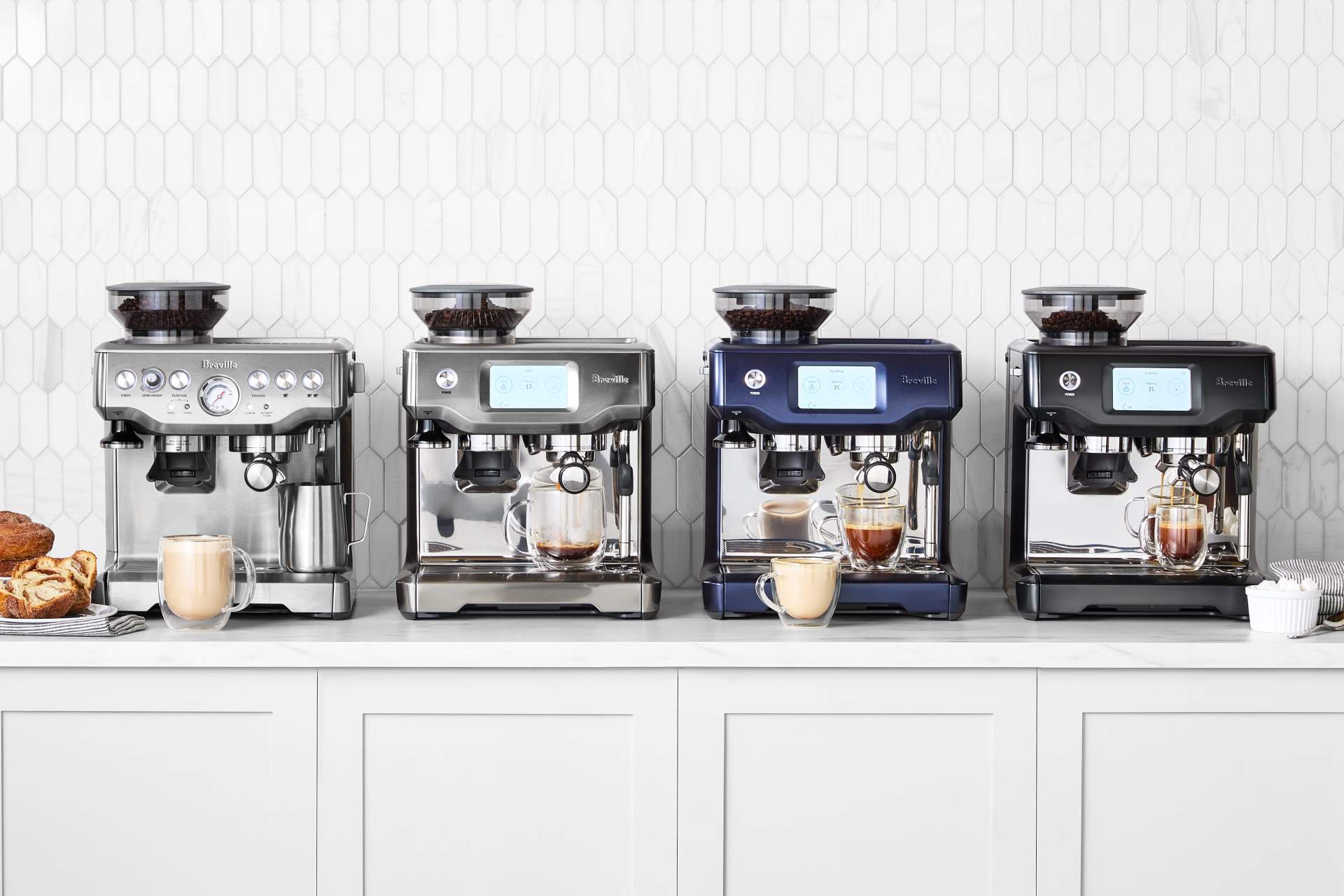

Originally published August 3, 2022. Updated April 24, 2023.
There are few tools as important to a well-stocked kitchen as an excellent set of knives.
But with so many different types of kitchen knives available, it can be challenging to know how to choose the best kitchen knife for your needs.
Whether you’re a professional chef or a home cook, selecting the best knife for your kitchen can help improve your efficiency, precision and overall enjoyment of cooking. In this guide, discover how to choose the best knife for your kitchen, including key factors to consider, popular types of kitchen knives and tips on how to care for and maintain your knives.
Hungry for more? We have knives for every kitchen and every need. Plus, they all ship free! Explore our collection and find the one that’s perfect for you!

When thinking about how to choose a kitchen knife, there are several factors to consider to ensure that you find the perfect one for your needs. The right knife can make all the difference in your cooking experience, allowing you to work more efficiently, precisely and safely. Some things to consider when choosing the best kitchen knives for you include:
It’s almost impossible to have just one knife to tackle everything you need to as a home cook. Having different types of knives in your kitchen will allow you to handle a wide variety of tasks.
For example, a chef’s knife is best for chopping and slicing, while a paring knife is better for precise tasks like peeling and trimming. The specific types and number of knives you need may vary depending on your cooking style and the types of dishes you like to prepare.
And while you don’t necessarily need a dozen different types of knives, having a few essential knives on hand can make a big difference in your cooking experience. So, when thinking about how to choose a knife for your kitchen and what knife you should buy, it’s important to think about knife functionality and versatility.
To have a well-rounded collection that can tackle almost everything you’ll want to prepare at home, we recommend the following types of knives:
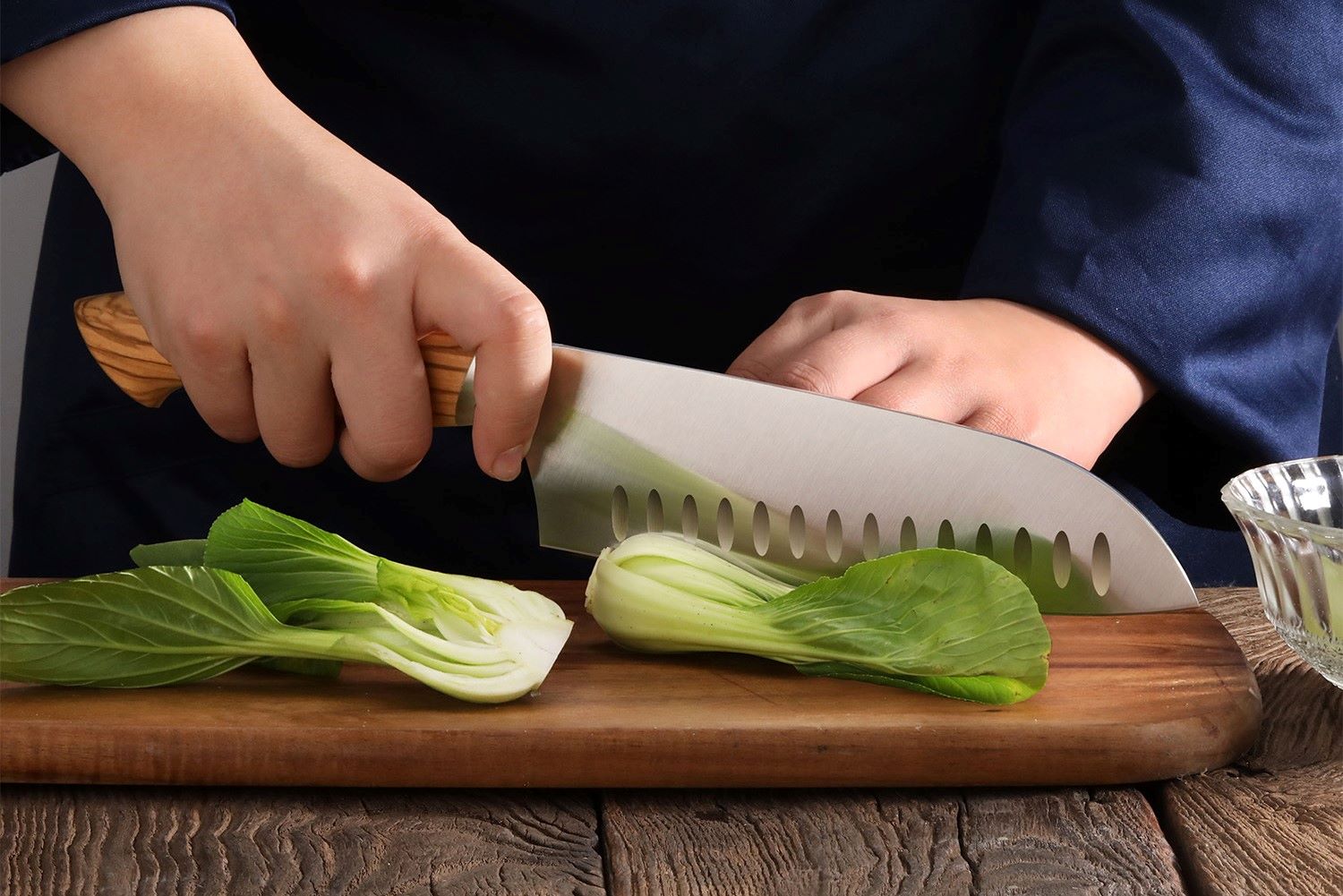
A kitchen knife should be as sharp as possible for safe and efficient use in the kitchen. A sharp knife requires less force to cut through ingredients, which reduces the risk of the knife slipping and causing injury. A dull knife, on the other hand, requires more force and can slip–leading to accidents in the kitchen or uneven cuts. Plus, it can tear or crush the food rather than slicing cleanly through.
The sharpness of a knife can be measured by its edge angle, which is the angle formed between the blade and the sharpened edge. A typical edge angle for a kitchen knife is between 15 and 20°. However, some knives, such as Japanese-style knives, may have a smaller angle, which makes them even sharper.
To ensure that your kitchen knife is as sharp as possible, it’s important to sharpen it regularly using a sharpening stone, honing steel, or other sharpening tool. A honing steel can be used to realign the edge of the knife between sharpenings, while a sharpening stone can be used to remove small nicks and restore the edge to its original sharpness.
A sharp blade is the hallmark of a great knife–and several factors, including the material, construction and brand of the knife, all influence its sharpness.
Material
Certain materials retain their sharpness better than others. Stainless steel makes a sturdy, reliable knife because it’s strong but can be sharpened to a fine point. You’ll also find knives made from zirconia or zirconium oxide, which is a superhard ceramic. These deliver precise cuts and stay sharp longer than steel. Carbon steel is also a popular choice for professional chefs because it holds its consistent, razor-sharp edge better than other materials. Plus, this makes carbon steel knives easier to sharpen, which is crucial for those clean, precise cuts.
Construction
A knife blade may be stamped or forged. Stamped blades are cut from a piece of metal before they’re filed down and attached to the handle. Forged blades are shaped from a single bar of steel by heating and pounding it into shape. Forged blades tend to be heavier and more durable. They also stay sharper longer. Many steel knives on the market feature ice-hardened blades. These go through a process that enhances their strength and sharpness. An ice-hardened blade is great for those looking for a thin, razor-sharp and lightweight blade that will last a long time.
Brand
There are many knife manufacturers out there—some, of course, are better than others. While the most important factors when choosing a knife are your cooking needs, its material and its construction, you’ll almost certainly get a high-quality blade when you purchase a chef’s knife made by renowned masters such as Bob Kramer, Zwilling J.A. Henckels, Global, Wüsthof, Shun and Miyabi.
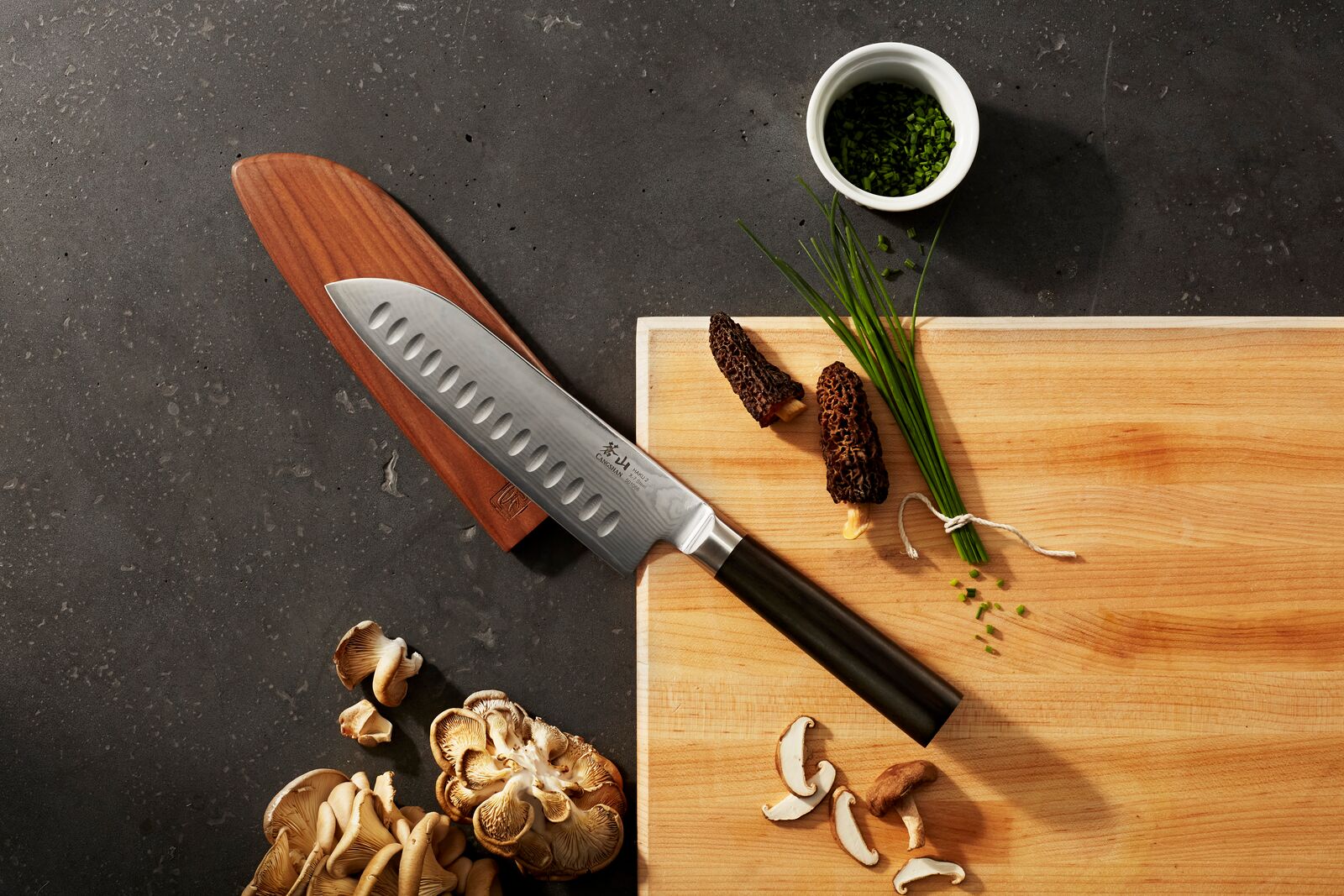
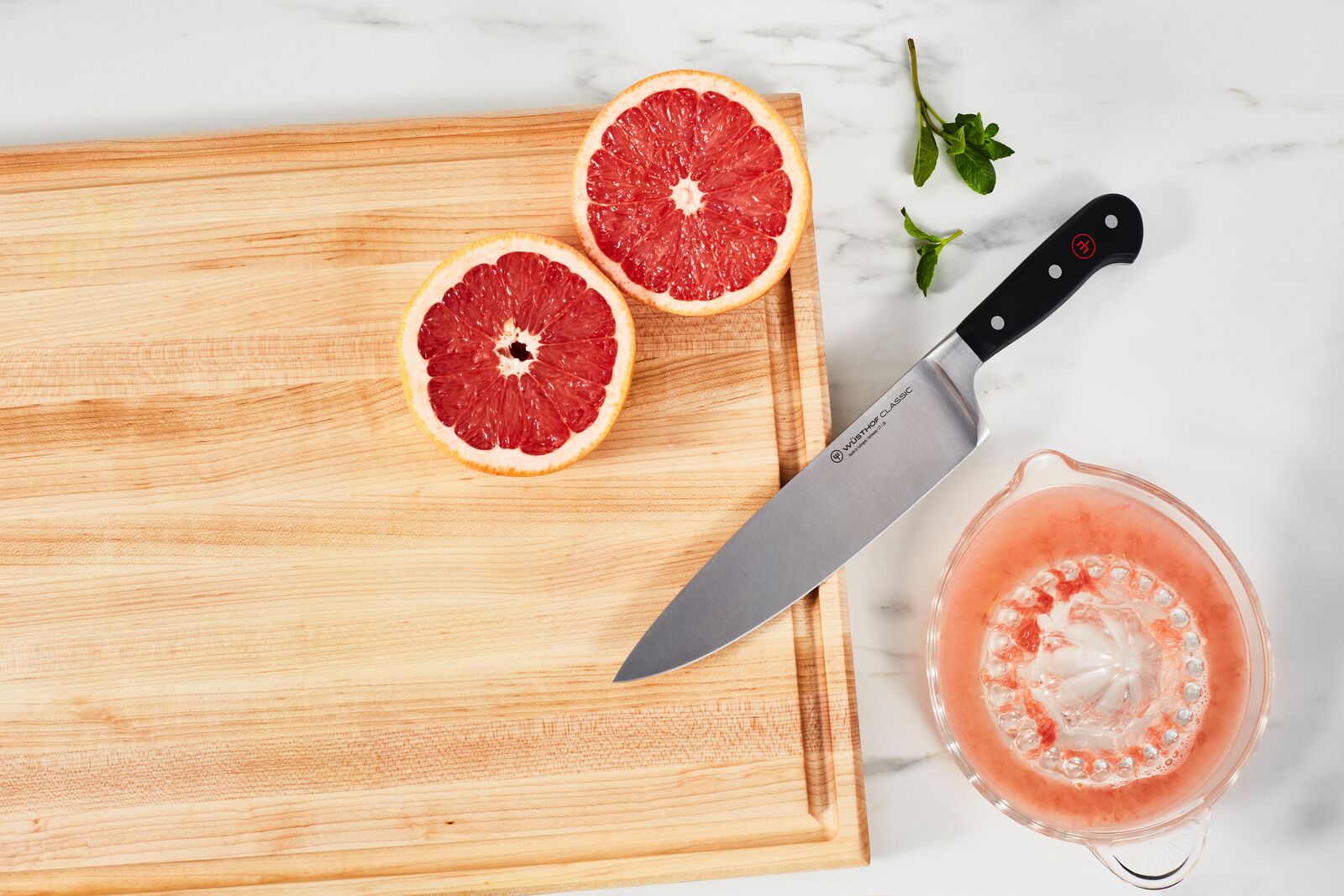
Kitchen knives come in two main styles: German and Japanese.
German knives are best for tougher chores, and Japanese knives are ideal for more delicate work.
It can be difficult to notice the subtle differences between these two styles. But each has its pros and cons based on your needs and preferences.
Japanese knives are usually made from harder steel, which means they tend to be sharper than German blades. They slice through fragile foods without crushing or tearing them. Japanese knives are also typically lighter than German knives due to the tapering of the blade inside the tang. This makes them ideal for more precise knife work.
German knives are generally heavier than Japanese ones. Most feature a full-tang construction, which means that a single piece of steel runs the full length of the knife. Look for a sturdy German knife if you tend to do more heavy cutting rather than fine, detailed knife work.
If you’ve ever asked yourself “what knives do I need”, you’re not alone.
But the answer is truly different for everyone! That’s because your budget, kitchen space and the types of foods you cook will dictate how many knives you may need. If you can only afford one piece, make it a high-quality chef’s knife. After you’ve gotten comfortable using it, you’ll have a good idea of what you’ll need to add to your collection.
If you spend a great deal of time whipping up eclectic meals, you might want a variety of knives. A chef’s knife won’t have a serrated edge, so you might need a separate bread knife. They’re also harder to use when making smaller, more intricate cuts—in that case, you’d want to consider buying a paring knife. Still, investing in high-quality pieces will serve you better than having a large collection of mediocre knives.
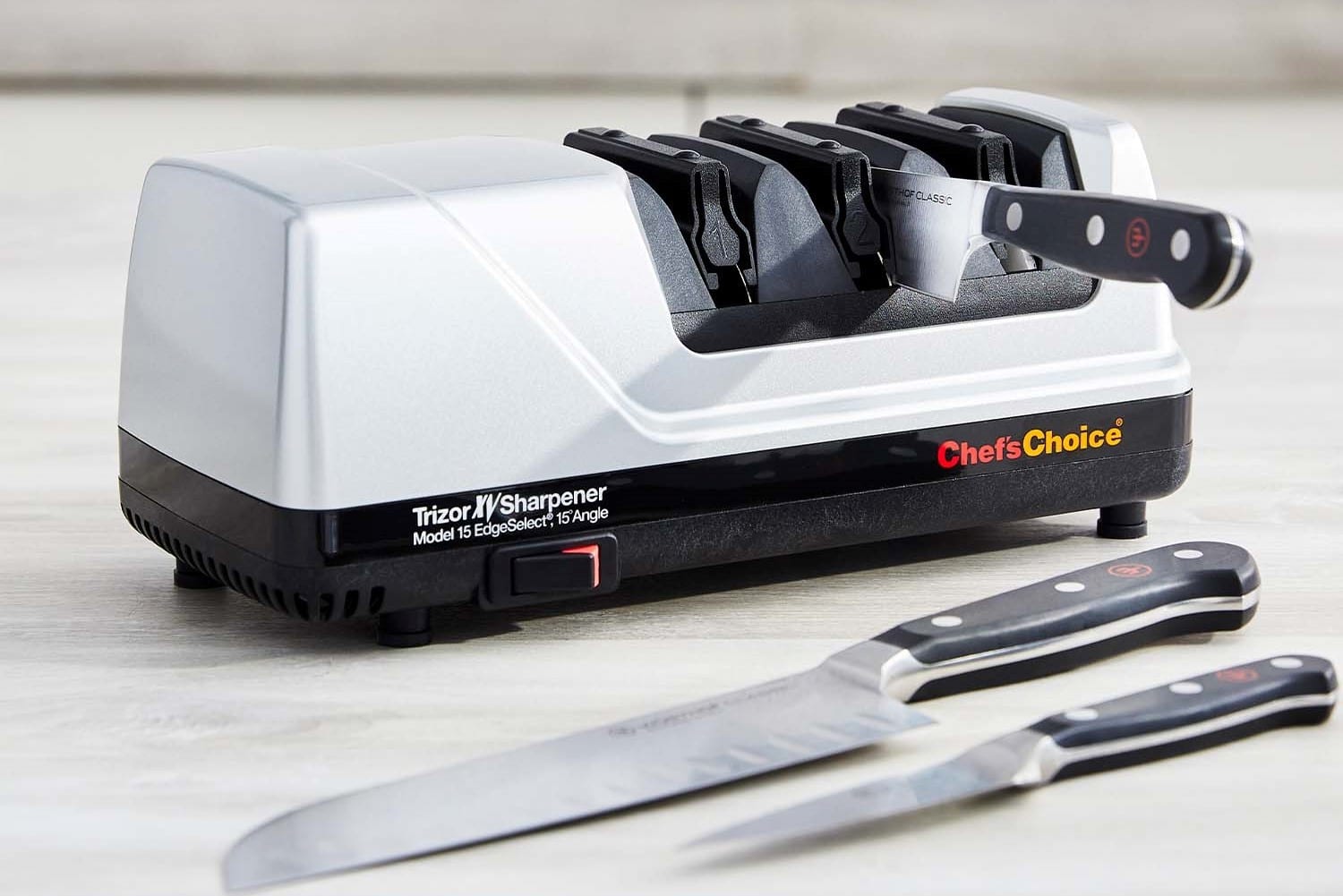
It’s also important to properly care for your kitchen knives, so they stay sharp and functional for as long as possible. Some tips on how to care for kitchen knife include:
Hungry for more? We have knives for every kitchen and every need. Plus, they all ship free! Explore our collection and find the one that’s perfect for you!
Join The Conversation